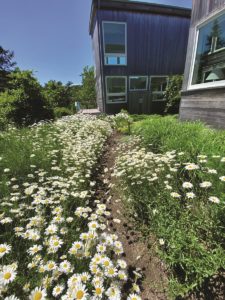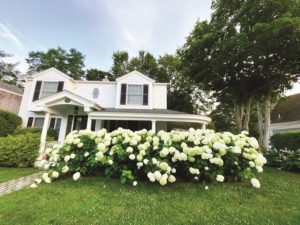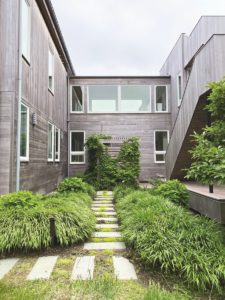Late summer and early fall are good times to plant. Which means now is a good time to start thinking about that garden bed expansion or adding the new plantings you’ve been quietly thinking about. Designing a garden can feel intimidating, though. Where do you start with that blank canvas of lawn or mostly empty bed? There are so many options to consider.
As with any art, discipline, or process, there are rules, concepts, and tricks you can look to for creating direction and structure. Designing a garden, like designing anything, really, begins with asking the right questions and finding the answers that will guide you.

Good first questions to ask yourself as you look to create a new garden: What do I want this space to feel like? What do I want this garden to be about? How do I want to experience it?
In other words, consider whether you are seeking a calm space to sit and listen to leaves rustle in the wind or instead are wanting a wild, rambunctious country garden full of color and scents. And whether you are seeking a private space that feels like a nest or something that creates a view for others.
Give yourself the moments required to imagine and envision what you really want. I call this the “Big Idea.” It is the guiding principle or feeling that will dictate every design decision you make. Once you have this idea firmly in hand, whenever you have a question you can hold it up against the Big Idea and ask if what you’re considering works toward it or against it. If your Big Idea is that this will be a garden for hummingbirds, suddenly 90 percent of your decisions have been made. You will work only with plants that hummingbirds feed from, or plants that will visually support those plants.
Another question to ask before you buy anything: What’s my environment? What kind of plants will thrive here? The facts that emerge will largely determine what your plant palette will be. Let the conditions you are dealing with become a container full of options. If your space is one of full day-long exposure to sun, you’ll consider plants that thrive in the sun and your process has been simplified.
A further consideration is to think in terms of space. When we shape space, we shape experience. Consider how you want to both inhabit it and move through it.

Before selecting individual plants, think about where the bulk of the plant mass will be. This mass will become a definer of space; space that you will now be contained within. Do you want height to create a sense of enclosure? Is this a space to sit within? Is it a passageway to move through? Defining space can also be achieved with fences, walls, screens, landforms, and hedges; anything that visually and physically exists begins to define space.
Three really powerful rules to follow, once you’ve answered the above questions, are to plant in odd numbers, to use massing, and to use repetition.
Odd numbers offset balance and create good tension. Unless your purpose is to build an extremely symmetrical formal garden, tending toward odd numbers creates more visually pleasing arrangements that force you to consider how you are distributing your attention.

Once you start looking into plants, it’s easy to want to stuff as many different types and varieties into a single space as possible. The nursery is a wonderland of color and texture, a buffet of flowers. But we all know what can happen when we run wild at the buffet.
If you pursue too much variety, the result looks busy and disorderly. It is far more effective to choose a few plants that really work and to use them in large numbers. If the three Japanese anemones you have look good, why not go for it and consider an expanse of 15?
Repetition helps create a sense of pattern, which helps us make sense of a garden as our attention moves through it. Our minds like good continuation: Imagine a bed punctuated every 10 feet by a massing of large ornamental grasses. Your eye will move through this bed, from one mass of grasses to the next, and find a sense of patterning that’s pleasing.
Rules and tricks aside, you will want to make the garden yours. With purpose and structure and pattern established, now’s the time to mix in any little expressions that reflect who you are. Gardens are personal. This is your painting. Don’t forget to put your signature on it somewhere.



